
Cartoon
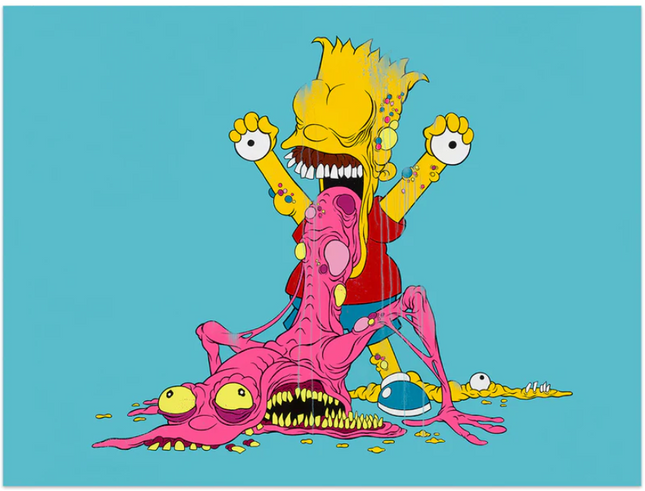
Alex Pardee No-Longer Bart Archival Print by Alex Pardee
No-Longer Bart Archival Print by Alex Pardee Limited Edition Print on Fine Art Paper Pop Artist Modern Artwork. 2023 Signed & Numbered Limited Edition of 100 Artwork Size 24x18 Archival Pigment Fine Art "No-Longer Bart" is an archival print by the artist Alex Pardee, known for his unique, twisted, and darkly humorous illustrations. Alex Pardee's work often incorporates popular culture icons, such as characters from The Simpsons, in bizarre and distorted forms that challenge viewers' perceptions and emotions. The "No-Longer Bart" print features a warped and unsettling rendition of the beloved character Bart Simpson, whose image has been altered to align with Pardee's signature style. Alex Pardee's archival prints are typically produced with high-quality materials to ensure the longevity and preservation of the artwork.
$234.00
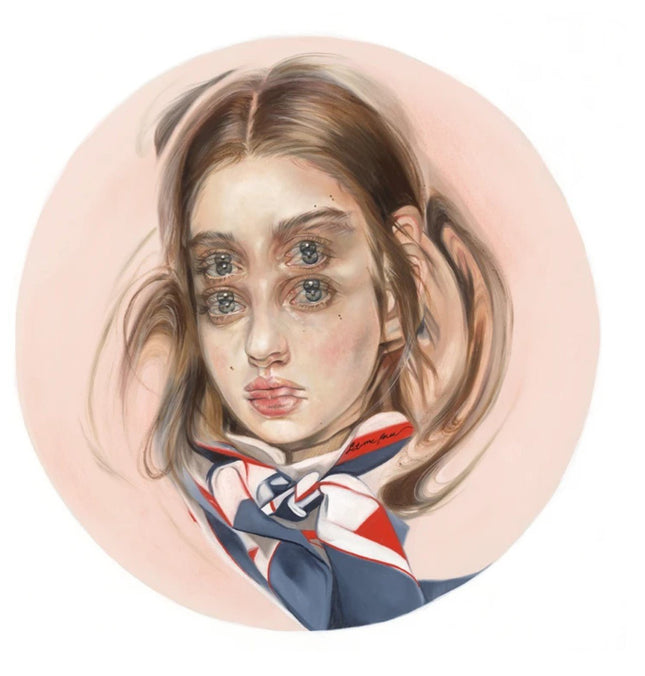
Alex Garant Powderpuff Archival Print by Alex Garant
Powderpuff Artwork Giclee Limited Edition Print on Fine Art Paper by Pop Culture Graffiti Artist Alex Garant. Artist: Alex Garant Title: "Powderpuff" Medium: Archival Pigment Print Edition: 50 Markings: Signed and numbered by the artist Dimensions: 18" x 18"
$153.00
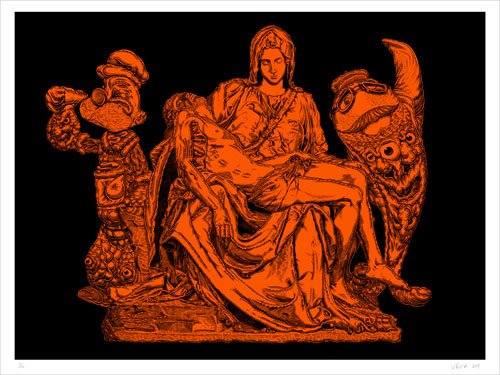
Mark Dean Veca My Mary Silkscreen Print by Mark Dean Veca
My Mary 2-Color Hand-Pulled Limited Edition Silkscreen Print on Fine Art Paper by Mark Dean Veca Rare Street Art Famous Pop Artwork Artist.
$518.00$440.00
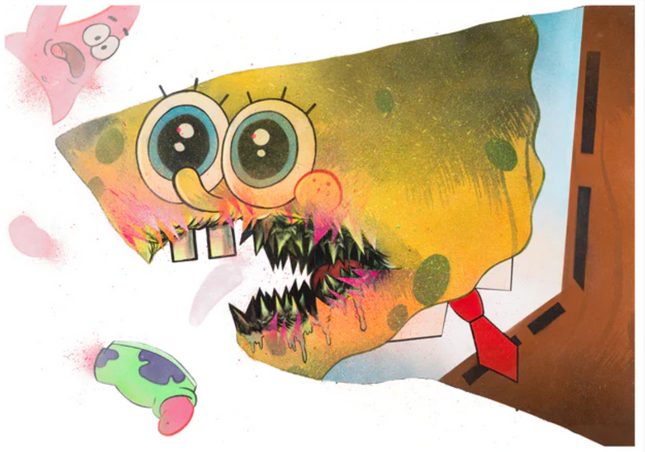
Shark Toof Ceci N'est Pas Une Spongebob PP Archival Print by Shark Toof
Ceci N'est Pas Une Spongebob PP Archival Print by Shark Toof Limited Edition Print on 310gsm Museum Fine Art Paper Pop Artist Modern Artwork. PP Printers Proof 2019 Signed & Marked PP Limited Edition Artwork Size 24x18 Archival Pigment Fine Art. "Ceci N'est Pas Une Spongebob, This Is Not A Spongebob" Decoding "Ceci N'est Pas Une SpongeBob" by Shark Toof "Ceci N'est Pas Une SpongeBob" is a provocative piece by the renowned street pop artist Shark Toof, challenging the boundaries of pop culture iconography within the context of modern street art. The artwork is a Printer's Proof (PP) archival print from 2019, meticulously signed and marked by the artist, denoting its status as a rare collector's item. Printed on 310gsm Museum Fine Art Paper, this piece exemplifies the high-quality medium Shark Toof employs to ensure durability and depth of color, crucial for the archival pigment fine art that this work represents. A Fusion of Street Art and Pop Culture This piece is a testament to the collision of street pop art and graffiti artwork with mainstream pop culture symbols. Shark Toof takes the universally recognized figure of SpongeBob SquarePants and distorts it, presenting an image that both acknowledges and subverts the original character. The title itself, a nod to René Magritte's "The Treachery of Images," prompts viewers to question the nature of representation and reality in art. Shark Toof's work suggests that the image of SpongeBob we see is not the character itself but a representation skewed by the artist's perspective and the cultural context in which it is viewed. Shark Toof's Artistic Commentary In "Ceci N'est Pas Une SpongeBob," Shark Toof is not simply replicating a beloved character; he is initiating a dialogue about the saturation of media icons in society and the consumption of these images. The distortion and decomposition of SpongeBob's features invite the audience to reflect on how mass media shapes and sometimes distorts our perceptions. This work captures the spirit of street pop art by using graffiti artwork's spontaneous and rebellious essence to comment on and criticize phenomena. The layered textures and vibrant colors reveal the complex relationship between commercial imagery and artistic expression. The art piece explores the tension between street art's ephemeral nature and fine art prints' enduring quality. Shark Toof bridges two seemingly disparate worlds by choosing SpongeBob, an icon from an animated children's show, and placing it in the sophisticated realm of limited edition prints. This juxtaposition challenges the viewer's understanding of what constitutes 'legitimate' art, questioning the hierarchies within the art world. Through "Ceci N'est Pas Une SpongeBob," Shark Toof contributes to the discourse on the value and significance of street pop art and graffiti artwork in contemporary culture. By recontextualizing a figure from the lexicon of popular media, he endows it with new meaning and elevates it within the art canon. This artwork is a visual spectacle with an intellectual engagement, prompting conversations about the nature of art, media's influence, and street art's power to transform and transcend ordinary objects and characters into extraordinary pieces of cultural commentary.
$650.00
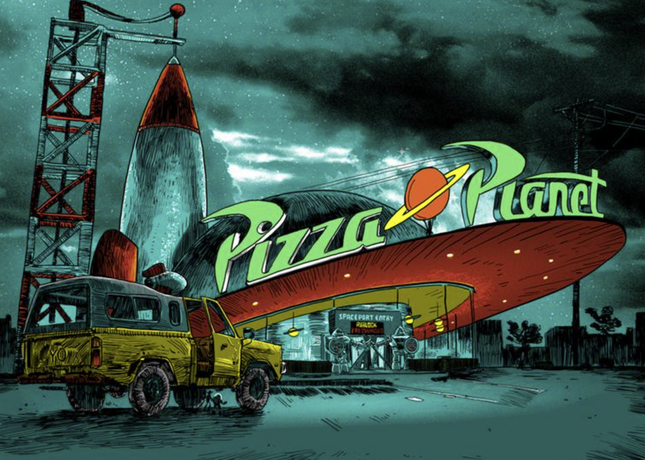
Tim Doyle It's A Spaceship by Tim Doyle
It's A Spaceship Silkscreen by Tim Doyle Hand-Pulled 8-Color Screen Print on Fine Art Paper Limited Edition Pop Street Art Artwork. 2015 Signed & Numbered Limited Edition of 150 Artwork Size 24x18 Toy Story Cartoon Movie Tribute, 4th Unreal Estate show
$253.00
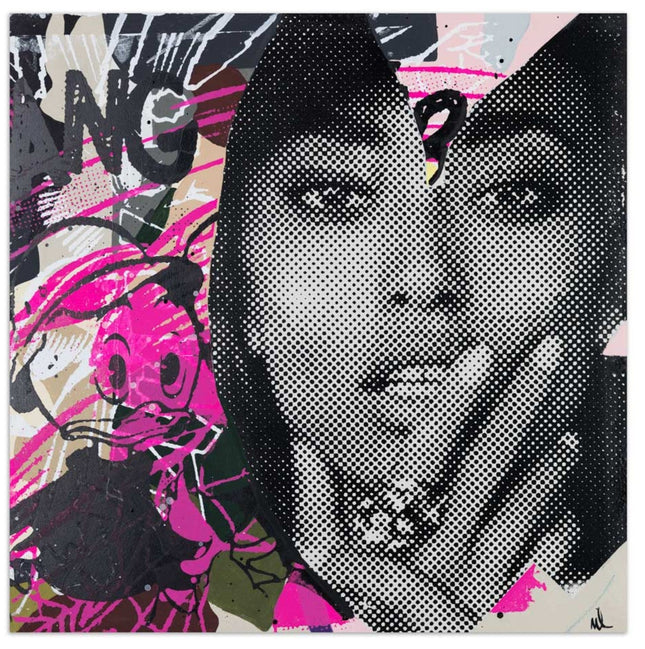
Marly Mcfly Radiate HPM Mixed Media Wood Print by Marly Mcfly
Radiate Hand-Painted Multiple (HPM) Acrylic, Spray Paint, and Ink on Wood Panel ready to hang by Marly Mcfly Graffiti Street Artist Modern Pop Art. 2021 Signed & Numbered Limited Edition of 8 HPM Artwork Size 18x18 Signed Edition of 8 Acrylic, Spray Paint and Ink on Wood Panel Size: 18 x 18 Inches Release: July 26, 2021
$572.00$486.00







